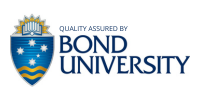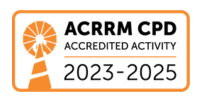This week we revisit a case from Dr Mazharul Islam, in which a 56-year-old lady presents for a...
.jpg?height=200&name=HCE%20HubSpot%20blog%20images%20600x350%20(32).jpg)
Advance your competence and confidence in managing medical conditions and health concerns pertinent to paediatric patients.

Be readily equipped to assess and manage paediatric emergencies, allergies, infections, dermatological conditions, and safeguarding concerns.
The online Advanced Certificate of Child & Adolescent Health enables you to build confidence in recognising acute presentations, providing evidence-based treatment for children, supporting families, and fulfilling mandatory reporting responsibilities across poisonings, anaphylaxis, food allergy, infections, and child protection.
- This course is for GPs, medical doctors, International Medical Graduates, registered nurses, and degree-qualified health professionals.
- CPD-accredited.
- Quality-assured by Bond Unversity.
Fulfils 50 hrs for medical professionals in Australia*
100% online
$1595
Special rates available
88 hrs
Self-paced
*provided an outcome measurement activity with a minimum of 5 hours is completed.

- Strengthen confidence in recognising and managing acute paediatric presentations in primary care.
- Apply evidence-based approaches to allergies, infections, dermatology and toxicology.
- Improve safety and outcomes through earlier identification of red flags.
- Enhance communication with families during high-stress presentations.
- Understand referral pathways and mandatory reporting requirements.
- Build a broader, more comprehensive paediatric skill set for everyday practice.
Get unlimited access to all course content, additional learning materials, ongoing post-course support, and more.
This module provides a practical approach to recognising and managing common poisonings in children. Participants will learn to identify key toxidromes, assess patient stability, and initiate appropriate early interventions. The module covers the clinical features and treatment of common toxic exposures, including paracetamol, salicylates, tricyclic antidepressants, and illicit drugs. It also explores supportive care strategies, decontamination methods, and the use of antidotes where applicable. Emphasis is placed on timely referral, recognition of red flag symptoms, and effective collaboration with poison information centres. Through case-based scenarios, participants will build confidence in managing acute toxicological presentations in a general practice or urgent care setting.
This module provides a comprehensive understanding of anaphylaxis, a rapidly increasing, potentially life-threatening condition. The curriculum is divided into five key units, covering everything from the historical background to advanced management strategies.
Unit 1 explores the historical context, definition, and epidemiology of anaphylaxis. It highlights the most frequent causes, including food, medication, and venom from insect stings. Unit 2 focuses on the pathophysiology and aetiology of anaphylaxis, examining temporal patterns, cofactors, and risk factors that contribute to its onset. Unit 3 discusses the clinical features and timing of reactions, with a detailed guide on diagnosis and differential diagnoses. Unit 4 reviews treatment protocols in the community setting, emphasizing the critical role of adrenaline, as well as the use of antihistamines, corticosteroids, and appropriate first aid measures. Special populations, including pregnant women and pediatric patients, are also discussed. This unit includes observation guides post-adrenaline administration and a clinical case study. Unit 5 covers post-event management, including referrals, investigations, and patient education. It includes information on adrenaline auto-injectors (AAI), action plans, allergen avoidance, and immunotherapy. Two additional case studies provide practical insights into managing this condition effectively.
Peanut, tree nut, seeds, seafood, cow’s milk and hen’s eggs.
This module provides a comprehensive understanding of food allergies and anaphylaxis, focusing on key aspects of diagnosis, management, and patient care. In Unit 1 learners are introduced to the differences between allergy and tolerance, epidemiology, and common food allergens such as dairy, eggs, peanuts, tree nuts, sesame, soy, fish, shellfish, and wheat. Unit 2 delves into the mechanisms underlying food allergies and anaphylaxis, covering the pathophysiology of specific allergens, the causes of allergic reactions, and cross-reactivity between allergens. In Unit 3, students explore the clinical features of anaphylaxis, including the stages of symptom onset and clinical management, with a focus on diagnostic tools, history-taking, and related conditions such as food protein-induced enterocolitis syndrome (FPIES), lactose intolerance, and eosinophilic esophagitis, illustrated by two clinical case studies. Unit 4 addresses the management of food allergies, emphasizing the importance of specialist and dietitian referrals, nutritional considerations in food elimination, and support for patients with FPIES or egg allergies, as well as a clinical case discussion. Unit 5 focuses on the management of anaphylaxis, including the use of antihistamines and corticosteroids, acute treatment of non-anaphylactic allergic reactions, and immunomodulation techniques. It also covers practical tools like milk and egg food ladders and offers resources for patient and caregiver support.
This module on allergic rhinitis and allergic conjunctivitis covers the key aspects of these common conditions and emphasises the role of general practitioners (GPs) in patient education and management.
The first unit discusses the history, definition, and epidemiology of these conditions, along with their consequences and associated comorbidities. The second unit focuses on the pathophysiology of allergic rhinitis and conjunctivitis, explaining the anatomy and functions of the nose, sinuses, and eyes, and the role of genetics. Unit three provides a classification of allergic rhinitis, including the ARIA guidelines on its impact on asthma. Clinical investigations, and subtypes of allergic conjunctivitis are discussed. Clinical images and red flags are used for enhanced learning. In unit four, allergy testing options, differential diagnoses, and nonallergic rhinitis subtypes are outlined, with two clinical cases discussed for practical insight. The final unit covers general management principles, pharmacotherapy, and treatment options for allergic conjunctivitis, including special considerations for pregnant and breastfeeding patients, allergen immunotherapy, and management of thunderstorm asthma. An additional clinical case is presented.
This module provides a comprehensive approach to diagnosing, treating, and managing common childhood infections in line with best practice guidelines. Through five focused units, participants will explore conditions such as Pharyngitis/Tonsillitis, Urinary Tract Infections, Impetigo, Pertussis (whooping cough), and Bronchiolitis. Each condition is examined in detail, covering its causes, symptoms, examinations, diagnostic tests, pathophysiology, management strategies, and referral criteria. Additionally, the module addresses aetiology, risk factors, preventive vaccines, and patient care to support effective clinical decision-making.
This module opens with the definition, prevalence and legislation of child maltreatment. The process of mandatory reporting is provided. Unit two includes clinical images of various trauma injuries include bruises, abrasions, burns and bites that relate to physical abuse. Unit three outlines the clinical process when physical abuse or neglect is displayed. Presenting features including risk factors of presenting guardian characteristics and the child factors are discussed. Cutaneous injuries including bruising and burns are described and supported by clinical images. Differential diagnoses are considered including dermatological conditions. The consequences of abuse are outlined. Unit four focuses on the role of the GP and the process of managing these clinical presentations including the involvement of paediatric forensic and support services.
This module commences with outlining sexual offences against children. Rules may vary in different jurisdictions. Definitions, prevalence and legislation details are included. The male and female ano-genital anatomy is described in unit two. The process of forensic examinations for sexual assault are outlined in unit three and features a clinical case. Unit four focusses on the role of the GP and how a child may present. This includes features and signs to consider regarding the guardian’s characteristics and the child’s presenting profile. The process of managing these clinical presentations and aftercare are outlined. STIs, mental health and associated medical conditions are considered. The involvement of paediatric forensic and support services complete this module.
.png?width=143&height=143&name=Staff%20Photos%20Circle%20(1).png)
Dr Jane Macleod is the Course Chair for this course. Jane has expertise in child and adolescent health, including developmental paediatrics, care of young people living in out-of-home care, mental health and sexual and reproductive health, including gender medicine. Jane is highly skilled in inclusive care, gender care and trauma informed care


Dr Jonathan B. Karnes is a family medicine physician with special fellowship training in dermatology. He is employed by MDFMR Dermatology Services and is a member of Maine General Medical Center's active staff. He is also a faculty member in the Maine Dartmouth Family Medicine Residency program.
Jonathan’s special interest areas include:
.png?width=144&height=144&name=Joe%20Kosterich%20(3).png)
.png?width=144&height=144&name=Staff%20Photos%20Circle%20(15).png)

$1595
*provided an outcome measurement activity with a minimum of 5 hours is completed.
Bundle two courses and save 5%, or three courses and save 10% upon enrolment.
Talk to us about deferred payment options, registrar scholarships and special rates.
*For Australian residents only: Online course prices are shown exclusive of GST. If you are GST-registered, please enter a valid ABN at checkout to ensure GST is not applied. Otherwise, 10% GST will be added at checkout. View our FAQ for more information.


HealthCert courses have become the standard by which you gauge all others.
Dr K. Abolarinwa
Good courses with excellent speakers. I particularly enjoyed the case study scenarios which helped to integrate the knowledge gained.
Dr A. Tucker
This is the pathway to improve your confidence and evolve into the GP you aspire to be.
Dr S. Shinwari
| RACGP Activity Number | ACRRM Activity Number | Activity Title | Education Hours | Performance Hours | Outcome Hours | ||
|---|---|---|---|---|---|---|---|
| 455749 | 31186 | Family Planning | 455749 | 31186 | 4 | 6 | 0 |
| 455726 | 31184 | Menopause | 455726 | 31184 | 4 | 6 | 0 |
| 455707 | 31182 | Polycystic Ovarian Syndrome | 455707 | 31182 | 4.5 | 6 | 0 |
| 455695 | 31181 | Sexually Transmitted Infections (STI) | 455695 | 31181 | 5 | 6 | 0 |
| 455717 | 31183 | Pregnancy | 455717 | 31183 | 4 | 6 | 0 |
| 455758 | 31187 | Breastfeeding | 455758 | 31187 | 4.5 | 6 | 0 |
| 455769 | 31188 | Domestic Abuse | 455769 | 31188 | 3.5 | 6 | 0 |
| 455734 | 31185 | Menstrual Irregularities | 455734 | 31185 | 3.5 | 6 | 0 |
| 802714 | 32991 | Sexually Transmitted Infections (STI’s) Outcome Improvement Activity | 802714 | 32991 | 0 | 0 | 8.5 |
| Total hours | 33 | 48 | 8.5 | ||||
View the CPD Hours for all HealthCert Education activities.
The purpose of outcome measurement activities is to improve your clinical confidence in managing an identified learning gap. Outcome measurement activities are not a requirement of our Professional Certificate of Advanced Certificate courses; they are a requirement for Australian CPD purposes.
HealthCert Education provides a variety of outcome measurements activities to suit your needs:
| RACGP Activity Number | ACRRM Activity Number | Activity Title | Education Hours | Performance Hours | Outcome Hours | ||
|---|---|---|---|---|---|---|---|
| 1396620 | 39066 | Poisoning: Causes, symptoms and treatments for children | 1396620 | 39066 | 4 | 6 | 0 |
| 1168340 | 35893 | Anaphylaxis: Causes, symptoms, emergency treatment | 1168340 | 35893 | 3.5 | 6 | 0 |
| 1168718 | 35901 | Food allergies: peanut, tree nut, seeds, seafood, cow’s milk and hen’s eggs | 1168718 | 35901 | 3.5 | 6 | 0 |
| 1169091 | 35904 | Allergic rhinitis, allergic conjunctivitis and desensitisation | 1169091 | 35904 | 3.5 | 6 | 0 |
| 1283593 | 37195 | Common childhood infections | 1283593 | 37195 | 4.5 | 6 | 0 |
| 1283624 | 37196 | Paediatric topics, follicular disorders & blistering disorders | 1283624 | 37196 | 4.5 | 6 | 0 |
| 516696 | 31273 | Child physical abuse and neglect | 516696 | 31273 | 4 | 6 | 0 |
| 516707 | 31274 | Child sexual abuse | 516707 | 31274 | 4 | 6 | 0 |
| 1346193 | 37894 | Food Allergies Outcome Improvement Activity | 1346193 | 37894 | 0 | 0 | 8.5 |
| Total hours | 31.5 | 48 | 8.5 | ||||
The purpose of outcome measurement activities is to improve your clinical confidence in managing an identified learning gap. Outcome measurement activities are not a requirement of our Professional Certificate of Advanced Certificate courses; they are a requirement for Australian CPD purposes.
HealthCert Education provides a variety of outcome measurements activities to suit your needs:
The Advanced Certificate of Child & Adolescent Health is tailored for medical doctors who wish to improve patient outcomes by managing common child health issues in general practice.
The courses are suitable for physicians and degree-qualified medical practitioners, including registered nurses. This qualification is stage two of the Professional Diploma of Child & Adolescent Health pathway. Participants must have successfully completed the HealthCert Professional Certificate of Child & Adolescent Health (or a qualification deemed equivalent).
Participants do not have to pass an IELTS test but, as the courses are delivered in English, proficiency in listening, reading and writing English is assumed.
Participants will require access to a computer/laptop, an internet connection and a basic level of technology proficiency to access and navigate the online learning portal.
This certificate course meets the minimum 50 hours CPD annual requirement across all three mandatory CPD activity types, provided an outcome measurement activity with a minimum of five hours is completed. You may use an optional HealthCert outcome measurement activity or develop your own.
Outcome measurement activities are not a requirement of Professional or Advanced Certificates.
Upon successful completion of the exam, course participants will receive an Advanced Certificate of Child & Adolescent Health and CPD hours.
This certificate course:
Professional Diploma Pathway
This course is the second stage of the Professional Diploma of Child & Adolescent Health pathway. The education pathway is: Professional Certificate of Child & Adolescent Health > Advanced Certificate of Child & Adolescent Health > and the Professional Diploma of Child & Adolescent Health (coming soon).
This organisation is an RACGP-accredited CPD provider under the RACGP CPD Program.




Don't see your question? Explore other faqs or talk to us.
Fees will vary based on the program and study option selected (fully online vs online + optional practical workshop). Payments can be made upfront or in monthly instalments. Special rates and various payment options are available. GP registrars and doctors in training enjoy a scholarship of up to $500. Talk to us to learn more.
Completion of any HealthCert course or attendance at an event will enable you to access the HealthCert Alumni Program which includes:
HealthCert Education is pleased to issue digital credentials for alumni. Digital credentials are a permanent online record of your successful completion of a HealthCert course and are issued to all course participants in addition to PDF certificates. If you are based in Australia, you also have the option to order a hard copy of your digital certificate for a small additional fee.
The recommended study duration of this certificate course is 88 hours, which includes study of the pre-course activities and readings, online lectures, live tutorials, and online assessment. This self-paced course offers the flexibility of 100% online study in your own time, at your own pace, in your own home or office, with no mandatory face-to-face requirements. You are not required to be online at specific times but can view and replay video lectures at your convenience.
All HealthCert courses meet World Federation of Medical Education standards. This certificate course qualifies for CPD hours from the Royal Australian College of General Practitioners (RACGP) and the Australian College of Rural and Remote Medicine (ACRRM) in Australia. It is recognised by the Royal New Zealand College of General Practitioners (RNZCGP) in New Zealand. It is recognised by the Hong Kong College of Family Physicians (HKCFP) in China. It is a self-submitted activity in Dubai and the United Kingdom. It is a self-submitted activity through the College of Family Physicians in Canada. If you live or work outside one of the above-mentioned countries, please contact us on admin@healthcert.com to discuss whether this course can be recognised in your country.
Want to stay up-to-date with the latest case studies, podcasts, free video tutorials and medical research articles pertinent to primary care?
Our Education Advisors can assist you with any queries and tailor our education pathway to suit your current expertise, interests and career goals.